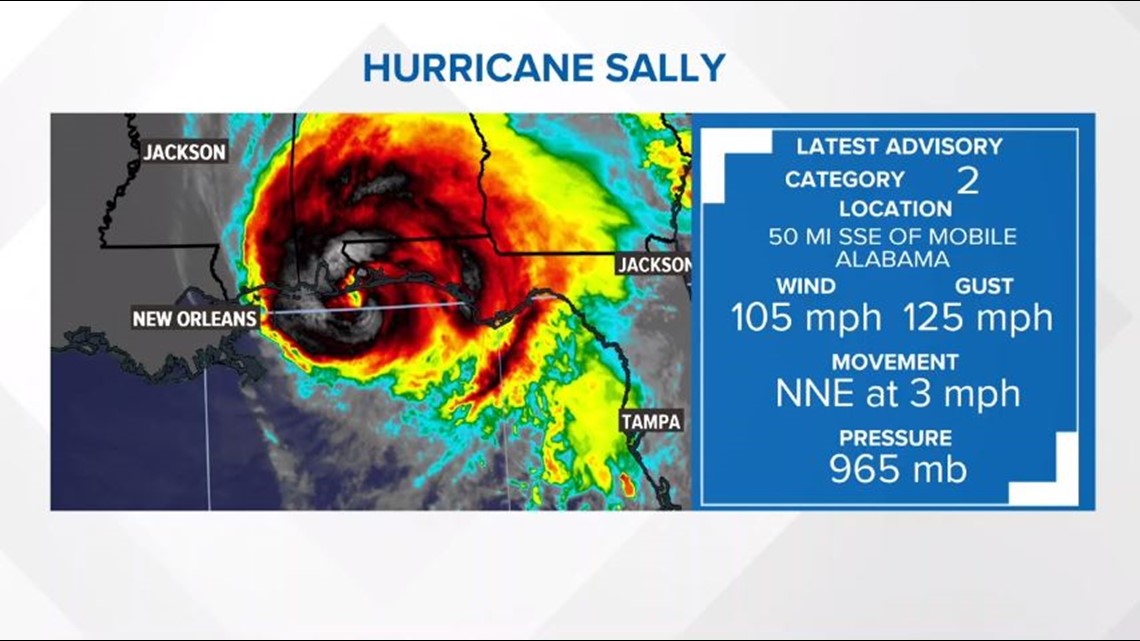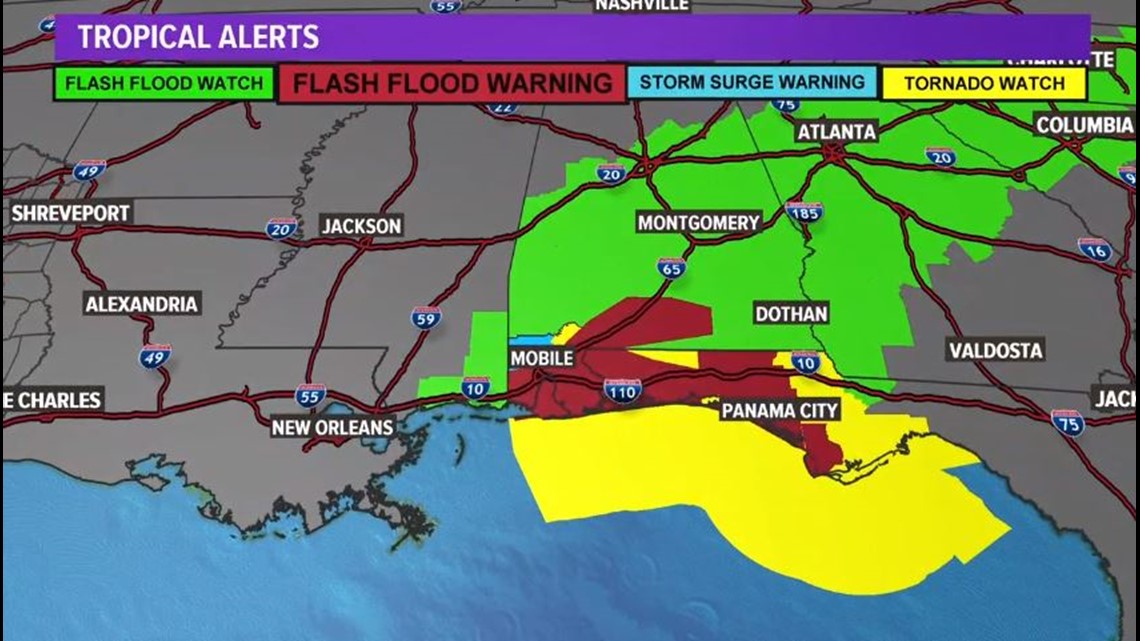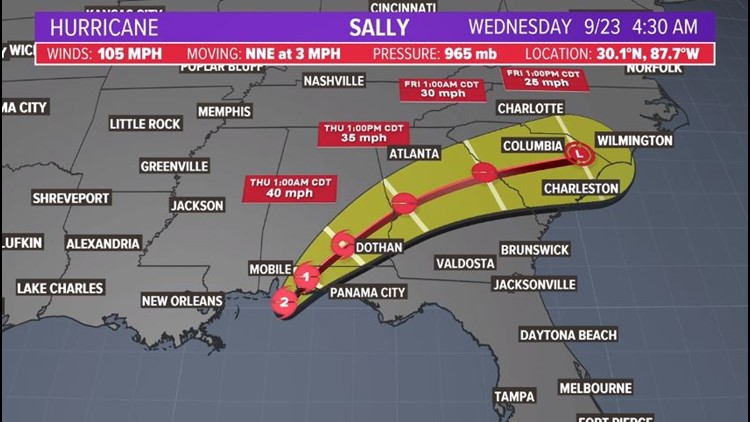HOUSTON — Hurricane Sally has made landfall as a Category 2 storm after strengthening again overnight, according to the National Hurricane Center.
As of 4 a.m. Wednesday, Sally had with maximum sustained winds of 105 miles per hour, with higher gusts. It's moving north-northeast at 3 mph and was located about 50 miles south-southeast of Mobile, Alabama.
The Hurricane Warning has been replaced with a Tropical Storm Warning from the Mississippi/Alabama border westward to the Mouth of the Pearl River.
The Tropical Storm Warning west of the Mouth of the Pearl River has been discontinued. The Storm Surge Warning has been discontinued from the Mississippi/Alabama border to Fort Morgan, including portions of Mobile Bay.
Rain from the storm's outer bands is pummeling parts of the Florida Panhandle, where Gov. Ron DeSantis declared an emergency. President Donald Trump has declared an emergency for parts of Louisiana, Mississippi and Alabama.
A strong storm surge is expected as the storm moves in. Because of how slow the storm is moving, flooding is a major concern. The pace is enabling the storm to gather huge amounts of water to eventually dump on land.
Hurricane Sally forecast cone


Hurricane Sally spaghetti models


Latest Hurricane Sally advisory


Hurricane Sally watches and warnings


Tracking several systems in Atlantic
Be prepared if a storm comes our way
BEFORE THE STORM
- Make a home inventory
- Have a current copy of your declarations page that has your policy number and your agent's number
- Review your policy with your insurance agent to determine if you have adequate coverage
- Repair loose boards, shingles, shutters and downspouts to prevent them from becoming an issue in high winds or torrential rain
- Have an evacuation plan, and include plans for your pets
- Make sure your emergency equipment is in working order, including a battery-powered radio, flashlights and extra batteries. Also, make sure to gather all medicine, replenish your first-aid kit and stock a week's worth of non-perishable food and water
- Charge your cell phone and fill your car with gas
- Program all emergency phone numbers
DURING THE STORM
- If you are advised to evacuate, leave as soon as possible. Retain all related receipts - they may be considered in your claim. If you aren't in a recommended evacuation and you plant to stay home, stay informed by listening to weather alerts
- Keep windows and doors closed at all time, and, if possible, board them up with wooden or metal shutters
- Stay away from the windows and in the center of the room, or, stay in an interior room
- Avoid flood water, as it may be electrically charged from downed power lines
- Check on family members and friends
AFTER THE STORM
- Check to be sure your family members are safe
- If you did evacuate, wait for official notice that it is safe to re-enter your neighborhood and your house
- Document damaged property, and take photos and videos. Don't dispose of any damaged items without approval
- Keep a record of any temporary repairs or expenses to prevent further damage to your property


